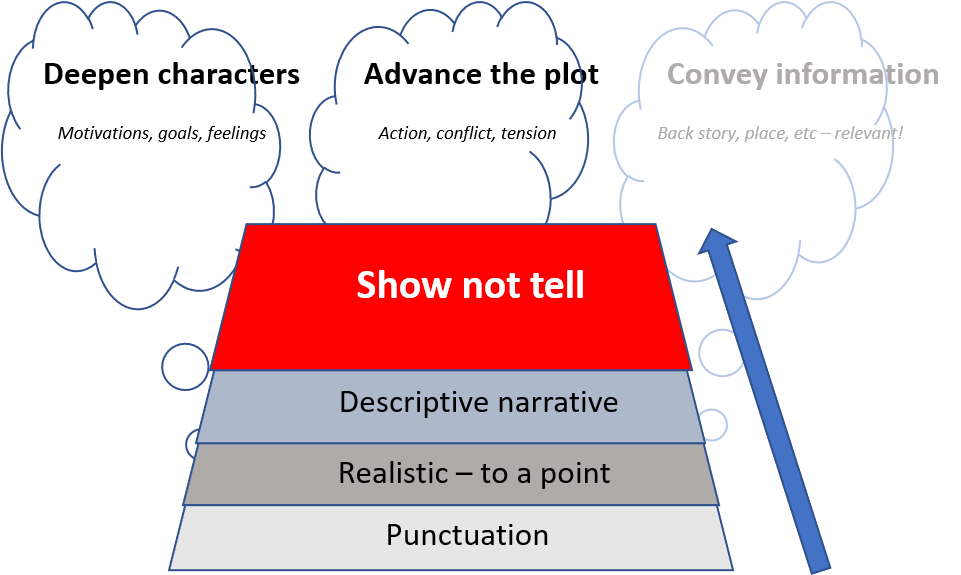(And a free downloadable guide)
For more writing tips, browse the ‘writing tips‘ category using the search bar at the bottom of the page.
Dialogue is important
When I read a piece of prose, whether it’s a short story or a novel, and the dialogue is done well, my heart gives a little skip of excitement. (I know, an exciting life!) Here is a writer who has taken the time to learn their craft.
And it generally extends to other aspects of the writing as well, and very much encourages me to keep reading. In fact, if I open a book preview and the dialogue punctuation is incorrect, it’s an automatic pass for me. This is a shame, because that’s the easiest part to learn.
But dialogue is so much more than the correct placement of commas. It’s about conversations which flow naturally, which hold the reader’s attention and which lead them along with the characters as the story unfolds.

Learning your craft as a writer
In 2019, I offered to do a workshop on dialogue for a Dean Writers Circle event. Not because I was an expert but because it gave me a motivation to dig into the topic. It was revealing and rewarding, and the workshop received good feedback. It was only an hour, but I learned a lot. Now when I’m writing I try hard to put what I learned into practice.
‘Maslow’s’ dialogue hierarchy

The basis of the workshop was this diagram, which gives an easy-to-follow approach for getting the best out of those conversations between our characters.
Start with the basics: correct punctuation is the air and water of dialogue. Then we move all the way up to using dialogue to drive our stories forward with pace and energy.
A practical overview
In the attached pdf, I’ve aimed to distil what I learned into a short practical guide, addressing each of the steps in the hierarchy. I hope even the most experienced writers among us will find some nugget here. Happy writing!
Further help
Covering more than dialogue, Renni Brown and Dave King’s excellent Self-editing for Fiction Writers has an insightful chapter. [This book should be compulsory reading for all novelists who want to learn the craft.]
To help with Show not Tell as far as your characters are concerned, The Emotion Thesaurus gives you dozens of alternatives to ‘happily’ , ‘excitedly’, ‘morosely’, etc.
Featured image by Mabel Amber, who will one day from Pixabay